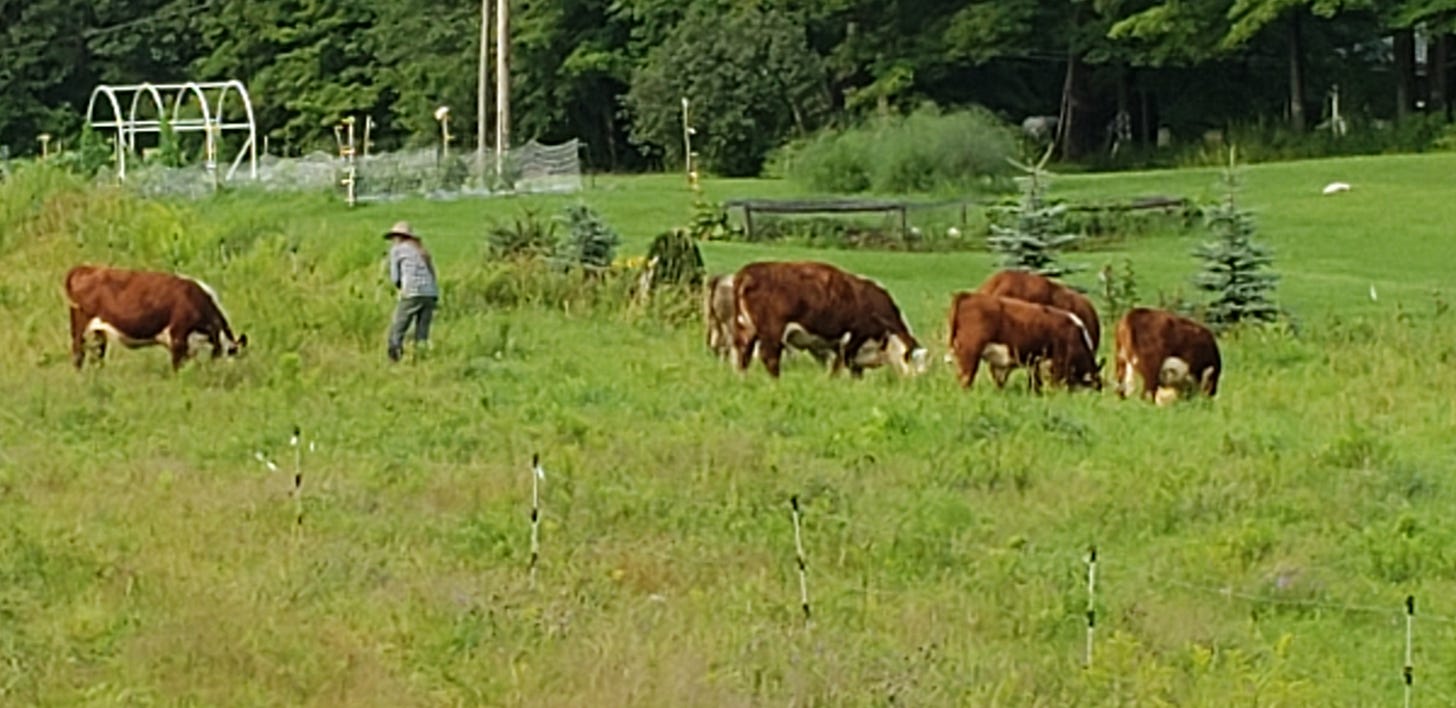Cows in almost every clime spend part of each year on pasture, and in winter eat stored grasses or grains. It is much less expensive to put cows out to pasture to feed themselves than to put up and store feed using equipment; it also impacts the environment much more positively. Vermont has long winters, which makes it a difficult place to farm when competing with southern states.
Farm animals do not grow as well on dried or processed feed as they do on fresh forage. To really fatten up a cow or sheep for milk or meat, farmers relish turning the animals onto fresh, healthy grasses. Not only do the animals feed themselves on demand and eliminate their wastes as sun-driven manure-spreaders, they ply the earth with their hooves and stimulate microbial growth and diversity in the soil.
(Jackie moving some cows to fresh ground.)
Blades of grass are natural (renewable) solar panels that collect current sunlight and store energy as blades grow and fruits (grains) mature. Farm animals convert this solar-generated energy into meats, while producing manure that richly feeds soils and plants. Machinery and equipment burn stored sunlight (fossil fuels), compact or rut the ground, and make a lot of noise.
There is nothing like fresh grass for livestock health as well as weight gain, and every mouthful of fodder that a cow or sheep ingests in the field is a mouthful of harvested hay they can avoid (saving money and labor). The animals also refurbish the soils with microbes from manure and treading on the grasses, and their dining stimulates faster growth, more overall photosynthetic activity, increased nutrient and water retention, and eradication of most weeds.
Keep reading with a 7-day free trial
Subscribe to Small Farm Republic to keep reading this post and get 7 days of free access to the full post archives.





